Discover 7 hidden attractions, cool sights, and unusual things to do in Wakkanai (Japan). Don't miss out on these must-see attractions: Wakkanai Park, Wakkanai Lighthouse, and Hokumon Jinja. Also, be sure to include Wakkanai Karafuto Museum in your itinerary.
Below, you can find the list of the most amazing places you should visit in Wakkanai (Hokkaido).
Table of Contents
Wakkanai Park
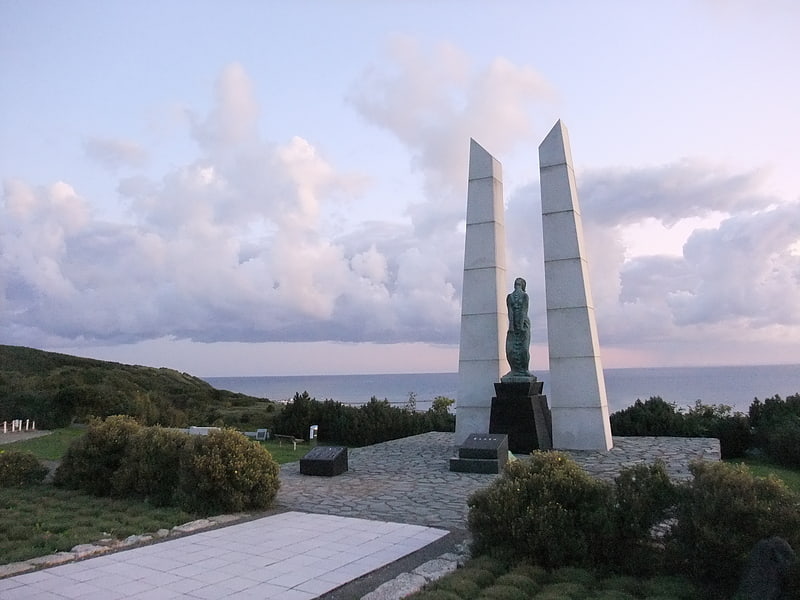
Park in Wakkanai, Japan. Wakkanai Park was established in Wakkanai, Hokkaidō, Japan in 1961. Covering some 45 hectares, when combined with the adjacent Forest Park, there is total area of approximately 100 hectares for "citizens to relax". Located on a hillside overlooking the Sōya Straits, within the park there are a number of memorials that, along with those of Cape Sōya, that to the Chihaku ferry near the North Breakwater Dome, the Northern Memorial Museum inside the park, and the Wakkanai Karafuto Museum, together help give Wakkanai the greatest density of "proxy" Karafuto lieux de mémoire in Hokkaidō.[1]
Wakkanai Lighthouse
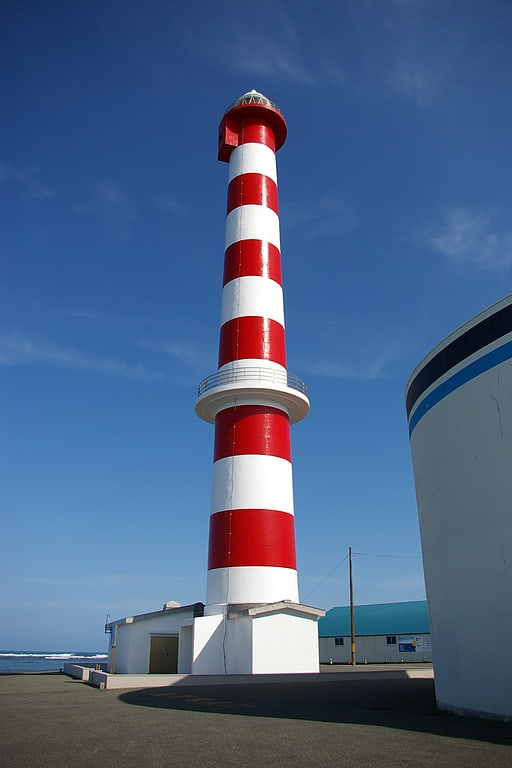
Local government office in Wakkanai, Japan. Wakkanai Lighthouse is a lighthouse in the city of Wakkanai, Hokkaidō, Japan. Rising to a height of 42.7 metres, it is the tallest lighthouse on the island and the second tallest in Japan, after Hinomisaki Lighthouse in Izumo. The old Wakkanai Lighthouse was built in 1900 in the hills above, but was forced to relocate after the area was taken over for a US base, the site now occupied by a JGSDF radar station. This first lighthouse provided one of the locations for the filming of Shochiku's 1957 Times of Joy and Sorrow. Wakkanai Lighthouse was rebuilt to the same height in its current location in 1966. With its vibrant red and white stripes, the lighthouse is today a symbol of Cape Noshappu and is made accessible to the general public by Wakkanai Coast Guard from the start of Golden Week each year.[2]
Hokumon Jinja
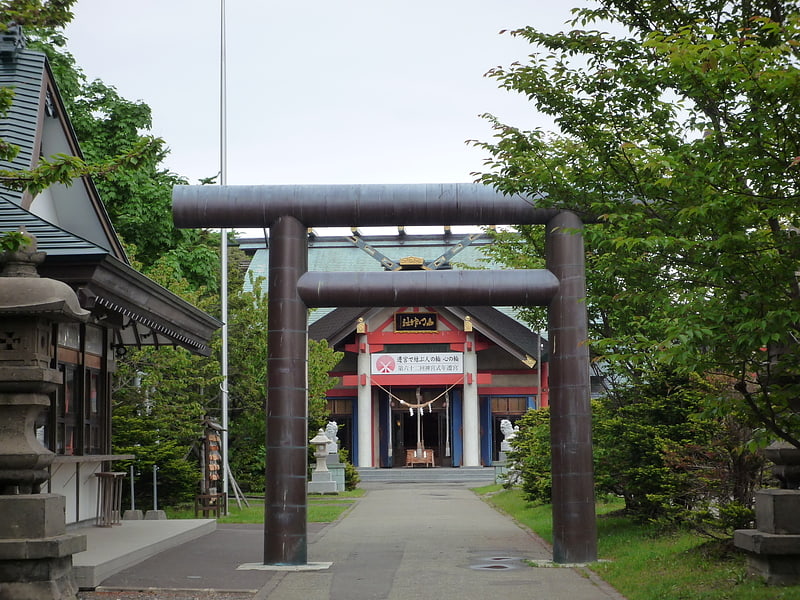
Shinto shrine in Wakkanai, Japan. Hokumon Jinja is a Shinto shrine in Wakkanai, Hokkaidō, Japan. In Tenmei 5, Matsumae Domain trader and agent Murayama Denbee is said to have founded the small shrine of Sōya Daijingū, enshrining Amaterasu as guardian of the north gate. In 1896 the shrine was transferred to its current location and renamed Hokumon Jinja, with Takemikazuchi and Kotoshironushi enshrined alongside Amaterasu. In 1902 work on the shrine buildings was completed, but on 17 May 1911 the whole complex was destroyed by a wild fire. The year 1913 saw the rebuilding of the honden and haiden and in 1916 Hokuman Jinja was ranked as a Village Shrine. In 1925 the shrine offices were donated and in 1933 Hokumon Jinja was promoted to the rank of District Shrine. The hexagonal shrine mikoshi was dedicated in 1949 and in 1978 the new shrine building was completed and a transfer ceremony held.[3]
Address: 1-1-21 Chuo, 097-0022 Wakkanai
Wakkanai Karafuto Museum
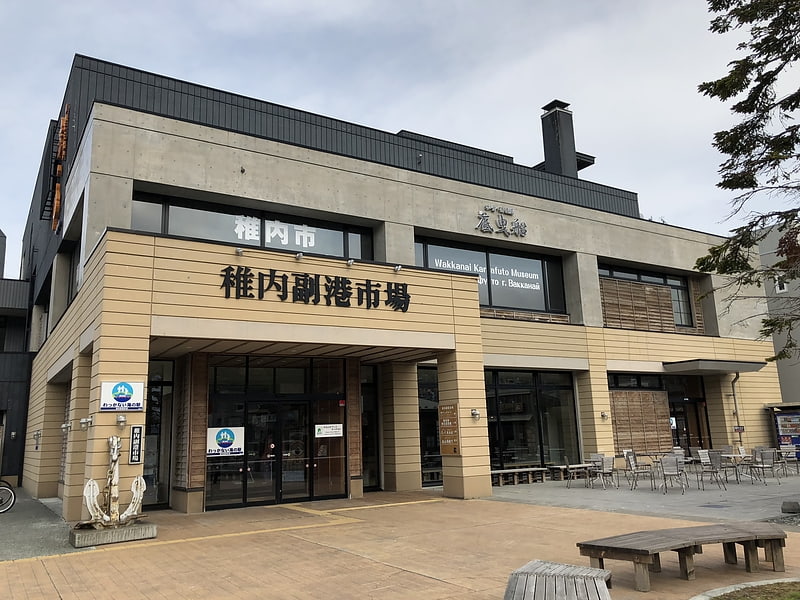
Wakkanai Karafuto Museum opened in Wakkanai, Hokkaidō, Japan in 2018. The display documents the history of Karafuto and its connections with the area and includes materials relating to the Chihaku ferry.[4]
Address: 1-6 Minato, Wakkanai
North Breakwater Dome

The North Breakwater Dome is a long arched "semi-domical" structure in the port area of Wakkanai, Hokkaidō, Japan. Rising to a height of 13.6 metres above the sea and extending some 427 metres, with seventy columns, an intercolumniation of 6 metres, and a width from column to wall of 8 metres, the form, inspired by a Roman arcade, is said to be without parallel.[5]
Address: 1-1 Kaiun (開運1丁目1), Wakkanai
Hokkaidō Heritage
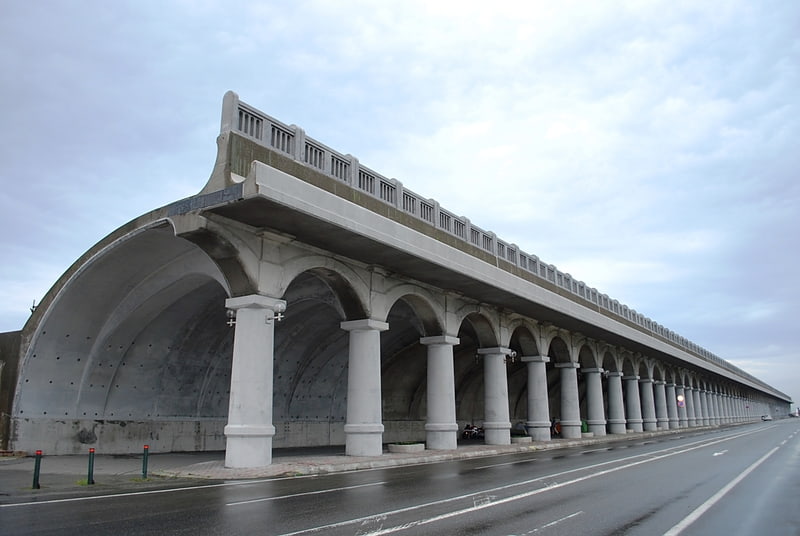
Hokkaidō Heritage is an initiative aimed at the valorization and transmission to the next generation of the tangible and intangible natural, cultural, historical, and industrial heritage of Hokkaidō, Japan. It is advanced by the Hokkaidō Heritage Council, an NPO, and endorsed by the prefectural government, amongst other bodies. Sixty-seven assets have been identified to date in three sessions, the first twenty-five on 22 October 2001, a further twenty-seven on 22 October 2004, and more recently, fifteen on 1 November 2018. The scheme does not include a formal system for management or preservation but is intended to be a citizen-led movement with the concomitant benefits of promoting tourism, fostering pride and a sense of belonging in local communities, developing human capital and potential, and the revitalization of local economies.[6]
Port of Wakkanai
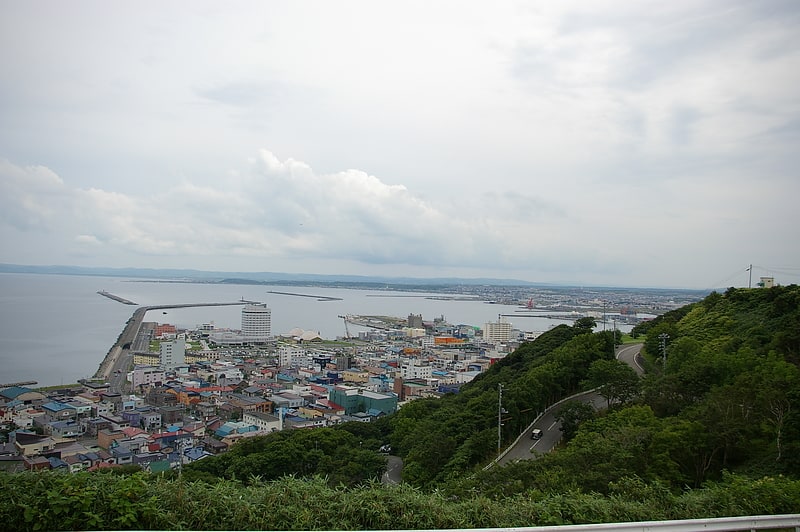
The Port of Wakkanai is a major port located in the Municipality of Wakkanai, Hokkaido Prefecture, Japan. Sakhalin lies about 62.81 kilometers to the north. Many ferries that go/come to/from Rishiri Island, Rebun Island and Sakhalin in Russia stop. It is also a distribution center for industrial materials and essential items for residents in the North of Hokkaido. Otherwise, the port is a base for inshore and offshore fisheries, and the port plays a role in Sakhalin-III. In 2007, the port was registered as Minato Oasis, and it was named "Minato Oasis Wakkanai" by the Ministry of Land, Infrastructure, Transport and Tourism.[7]